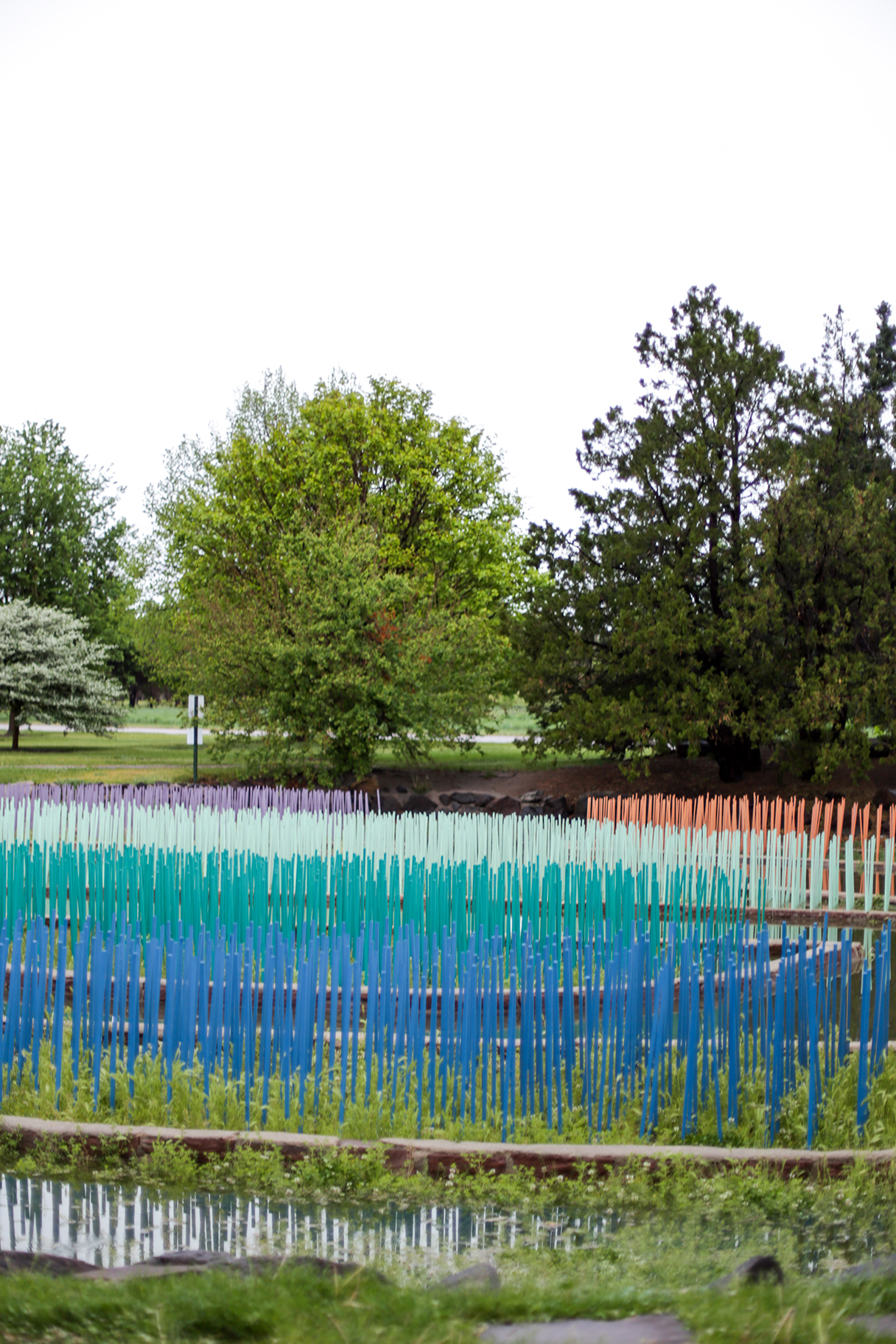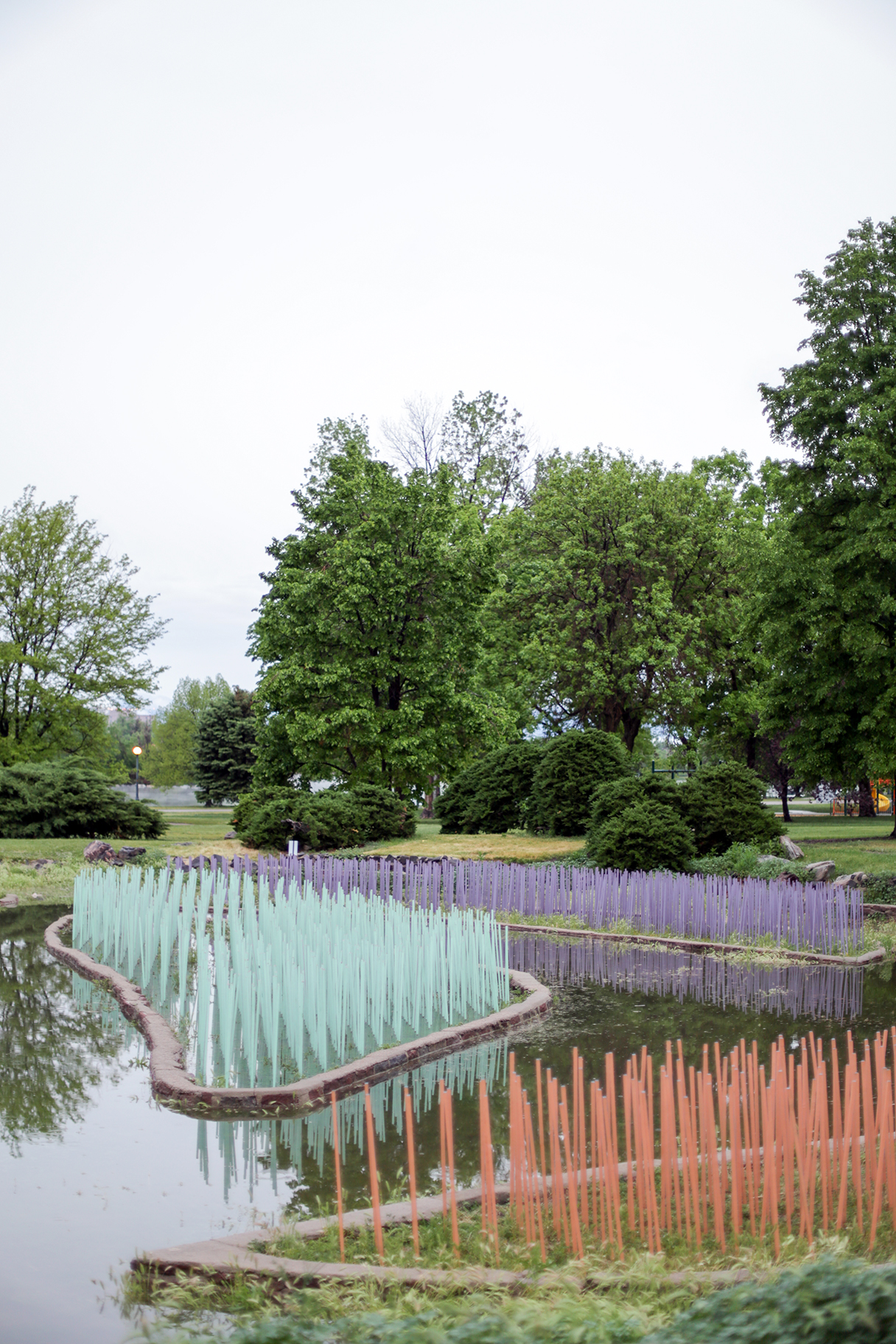A sediment pond in Denver’s City Park, near the corner of 17th Avenue and Colorado Boulevard, was originally created in 1917 as a living work of art. Filled with flowers inspired by the renowned Impressionist painter Claude Monet and his paintings of lily pads and water gardens late in life, this lily pond fit nicely into the City Beautiful movement of the late 19th century. A few years later in 1925, the pond was incorporated into the DeBoer Canyon by landscape architect Saco DeBoer as a way to beautify that space, even more, and offer a romantic getaway for the people of Denver. Decades later, the lily ponds were drained, leaving six seedbeds exposed.
Now, more than a century after the lily pond wowed onlookers with their blooms, the artist team Two Palm Studio reimagined the abandoned seedbeds into a pixelated garden made with 6,000 painted stakes. Instead of the natural fluttering of stems, buds and leaves, these stakes point upward in rigid form, stoic and solid. But the grace and movement of flowers are implied with these stakes in an abstract way, making it feel like a moment in time has been stopped and stretched as we watch.
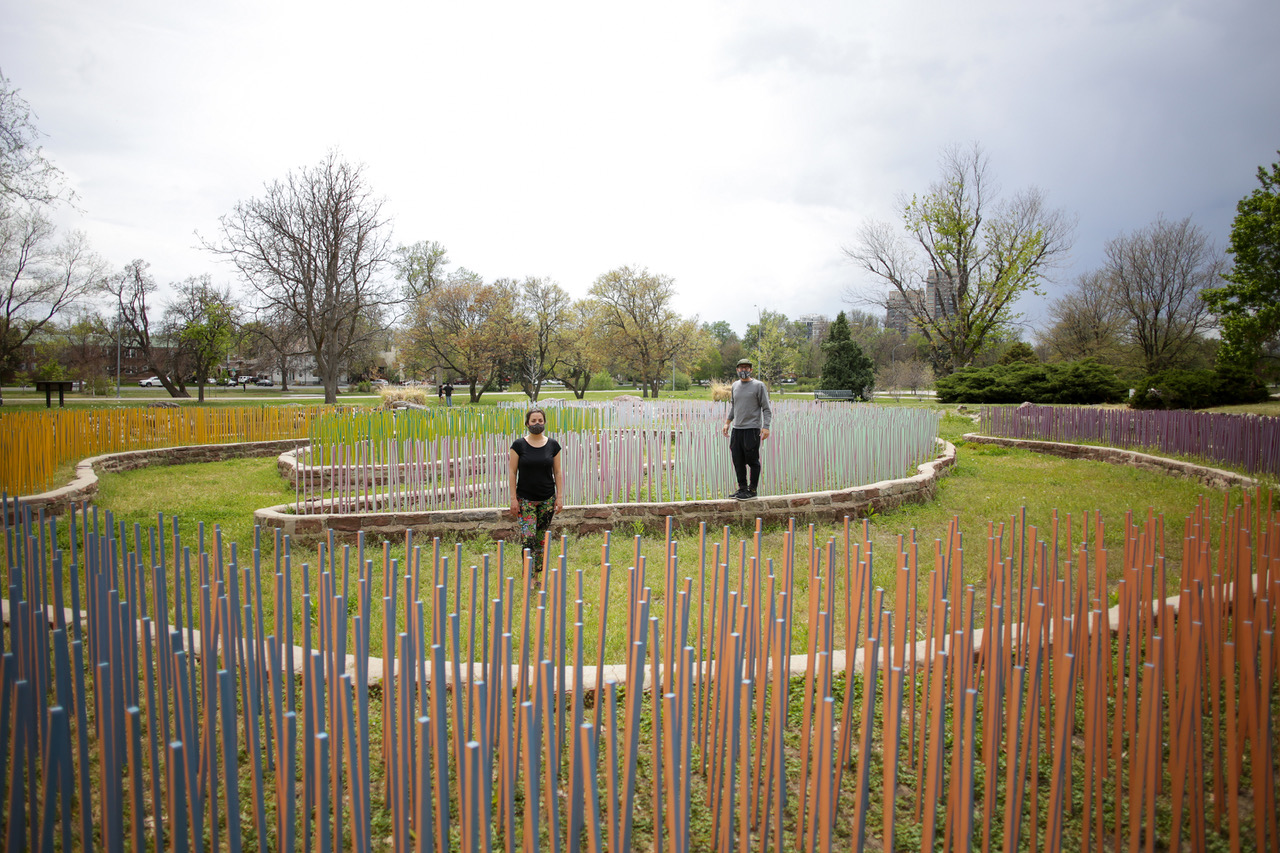
Sarah and Josh Palmeri
Behind Two Palm Studio is Sarah and Joshua Palmeri, a married couple who lived at the corner of 17th Avenue and Steele for years. Sarah is an abstract painter, Joshua an urban designer. When the two decided to transform the lily ponds in City Park, their two artistic practices merged in interesting ways. Sarah grew beyond her studio practice in order to physically paint thousands of stakes and Josh had more flexibility to imagine the reinvigoration of a place that lost its purpose.
“When we first started visiting the site together, all I knew was that I wanted to fill the space with color,” Sarah explained. “I loved the abstract shapes of the seedbeds, the conceptual connection to growth, and the hidden, calm quality of the space. After seeing the historic photos of the pond in its early days, we decided the piece should echo some of that history, and the color became as tall as what the surface of the water would be. It brings back some of the original intentions of the space.”
“I found it interesting that the space was not originally meant to be walked in because it was full of water and lilies,” said Joshua. “I have a passion for repurposing underutilized and unused public spaces and enjoy pushing the boundaries of what they can become or how they can be used differently.”
Color Field — named partly in response to the Color Field painters of the 1950s and ’60s — is a three-dimensional painting that changes depending on your view of it. The stakes are painted in monochrome groupings so that the colors stand out brilliantly with one sweeping glance, even though each group is made of hundreds of fractured pieces. But upon closer inspection, and you are encouraged to walk amidst the stakes, you’ll find slight variations in color patterns that invite you to further immerse yourself in the exploration of the space. If you visit after a heavy rain, you’ll find impromptu ponds surrounding the seedbeds — “which is kind of magical” as Sarah exclaimed.
“It’s an abstract representation of the lily pond, but it’s also a sculptural maze of color that you can inhabit,” said Joshua. This is also a good way to describe how the artist duo works together — Joshua, who thinks in terms of participation and moving through a space and Sarah, who lives in a world of color and abstraction.
Aside from the historical connection with Monet, the installation might not immediately appear connected to Monet’s brand of art. And yet it plays with many of Monet’s foundational techniques and inspirations. For instance, Color Field offers a different scene to someone who sees it in the morning from someone who sees it at dusk — an ode to Monet’s haystack series, among others. It was, however, a coincidence that the expansive Claude Monet exhibit at the Denver Art Museum (DAM) arrived before Color Field was actualized. “The exhibit at the DAM was announced when we started planning this project two years ago,” Sarah explained, “which was incredibly affirming that we were on the right track.”
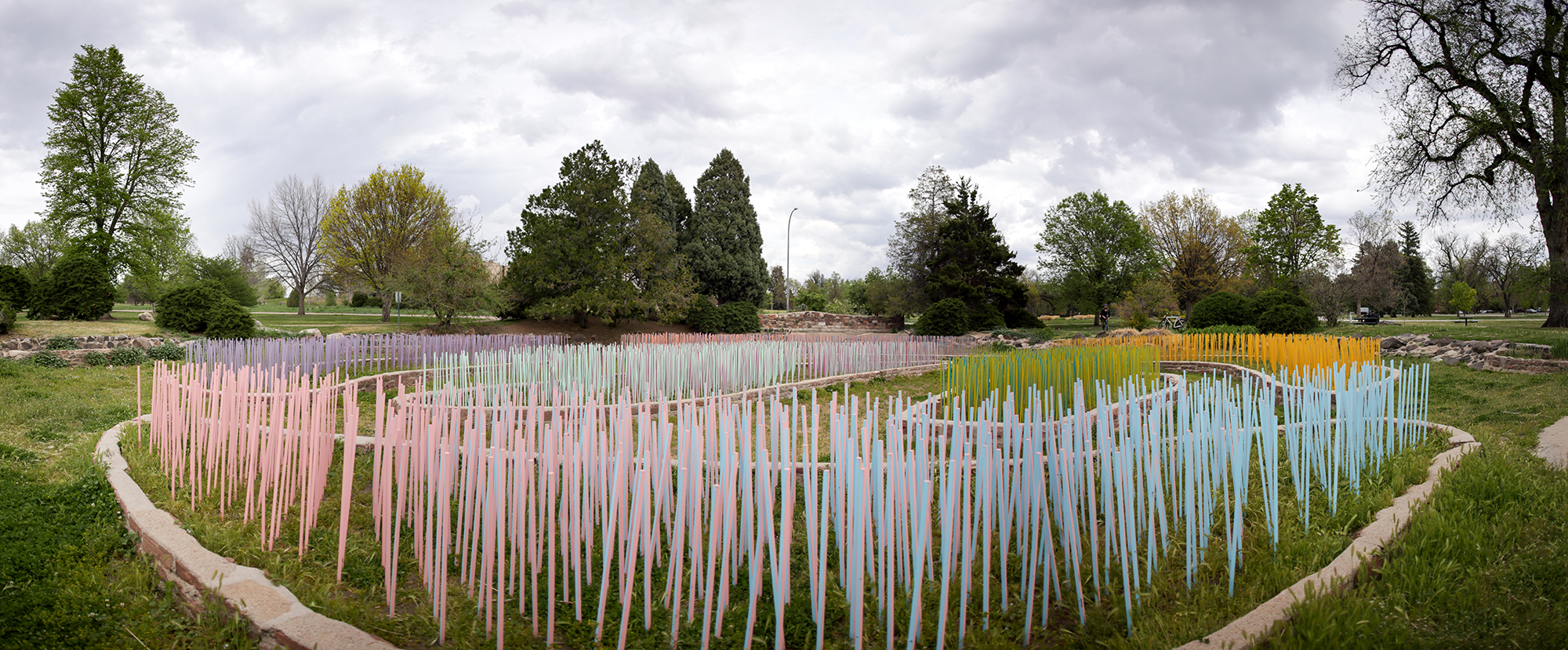
In order for this project to happen, the Palmeri’s applied for a P.S. You Are Here (PSYAH) grant last year after partnering with City Park Friends and Neighbors — an organization devoted to protecting the “classical pastoral character” of City Park. The partnership was awarded $8,000 to complete the project — which was accomplished over Mother’s Day weekend. It will be on view and accessible to the public until the end of September.
READ: Check Out These 11 Public Art Projects Coming to Denver in 2020
“I think it’s important to make art more accessible outside of gallery or museum walls,” Joshua commented. “The fact that anyone can stumble upon a new space, have a unique perceptual experience and discover something that is out of the ordinary should be a creative opportunity that everyone gets to experience more frequently.”
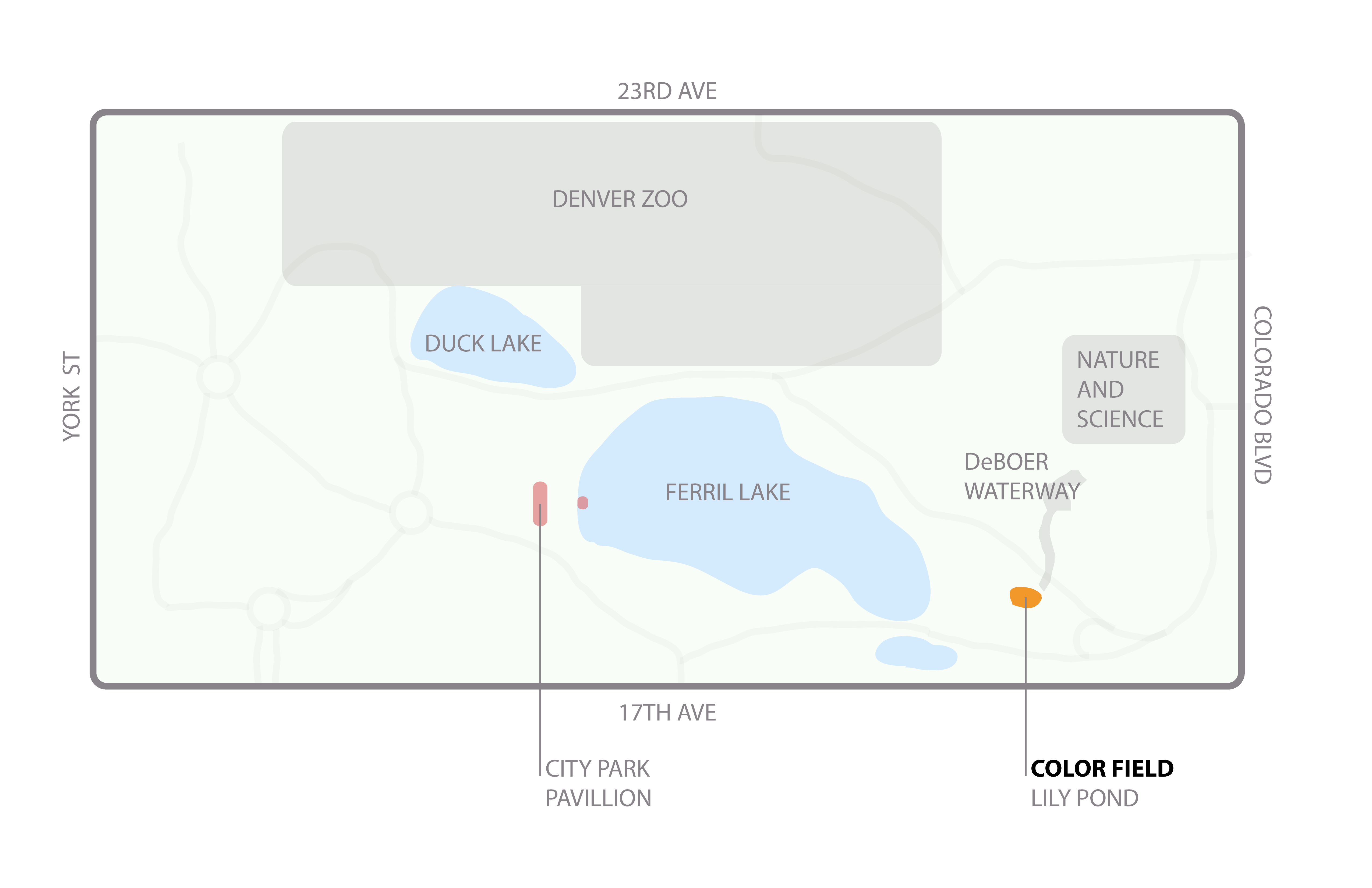
A map showing where to find “Color Field” in Denver’s City Park
—
For more information visit the Color Field website. All photography courtesy of Two Palm Studio

